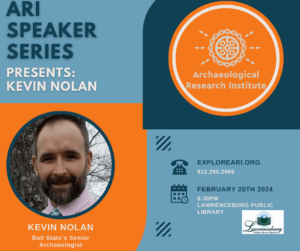
Speaker Series: Kevin Nolan

The various societies that participated in what archaeologists refer to as “Hopewell” (ca CE 100-400) in the Ohio Valley created some of the most impressive architecture and art, a testament to the uncommon genius of the Native inhabitants of the Ohio Country. This creative, artistic, and scientific genius was recently recognized by the inscription of the Hopewell Ceremonial Earthworks as Ohio’s first (and only) World Heritage site. What makes some of the accomplishments of these Hopewellian societies is that their masterful creations were organized and executed without substantial hierarchy and in the absence of urban population centers. Recent analyses of Ohio Hopewell exchange have revealed that the massive communal earthworks and the activities at them were a result of the relationships forged among various groups, not a driver of those relationships. The coming together to create art and architecture was an extension of centuries of investment in and maintenance of interpersonal and intergroup relationships. In a twist on Frost’s “Mending Wall”, good relations make impressive earthworks.
In this presentation, Dr. Nolan will review the findings and implications of numerous material sourcing analyses from the Scale and Community in Hopewell Networks (SCHoN) project. With Drs. Mark Hill and Mark Seeman, the SCHoN project has reshaped our understanding of the construction of Hopewell social networks, the underlying relationships, and even the timing of this cultural fluorescence.

